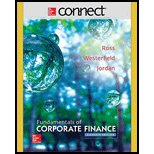
Concept explainers
The Decision to Lease or Buy at Warf Computers
Warf Computers has decided to proceed with the manufacture and distribution of the virtual keyboard (VK) the company has developed. To undertake this venture, the company needs to obtain equipment for the production of the microphone for the keyboard. Because of the required sensitivity of the microphone and its small size, the company needs specialized equipment for production.
Nick Warf, the company president, has found a vendor for the equipment. Clapton Acoustical Equipment has offered to sell Warf Computers the necessary equipment at a price of $6.1 million. Because of the rapid development of new technology, the equipment falls in the three-year MACRS
Alternatively, the company can lease the equipment from Hendrix Leasing. The lease contract calls for four annual payments of $1.48 million due at the beginning of the year. Additionally, Warf Computers must make a security deposit of $400,000 that will be returned when the lease expires. Warf Computers can issue bonds with a yield of 11 percent, and the company has a marginal tax rate of 35 percent.
2. Nick mentions to James Hendrix, the president of Hendrix Leasing, that although the company will need the equipment for four years, he would like a lease contract for two years instead. At the end of the two years, the lease could be renewed. Nick would also like to eliminate the security deposit, but he would be willing to increase the lease payments to $1.775 million for each of the two years. When the lease is renewed in two years, Hendrix would consider the increased lease payments in the first two years when calculating the terms of the renewal. The equipment is expected to have a market value of $3.2 million in two years. What is the NAL of the lease contract under these terms? Why might Nick prefer this lease? What are the potential ethical issues concerning the new lease terms?
Want to see the full answer?
Check out a sample textbook solution
Chapter 27 Solutions
Connect 1 Semester Access Card for Fundamentals of Corporate Finance
 Survey of Accounting (Accounting I)AccountingISBN:9781305961883Author:Carl WarrenPublisher:Cengage Learning
Survey of Accounting (Accounting I)AccountingISBN:9781305961883Author:Carl WarrenPublisher:Cengage Learning
